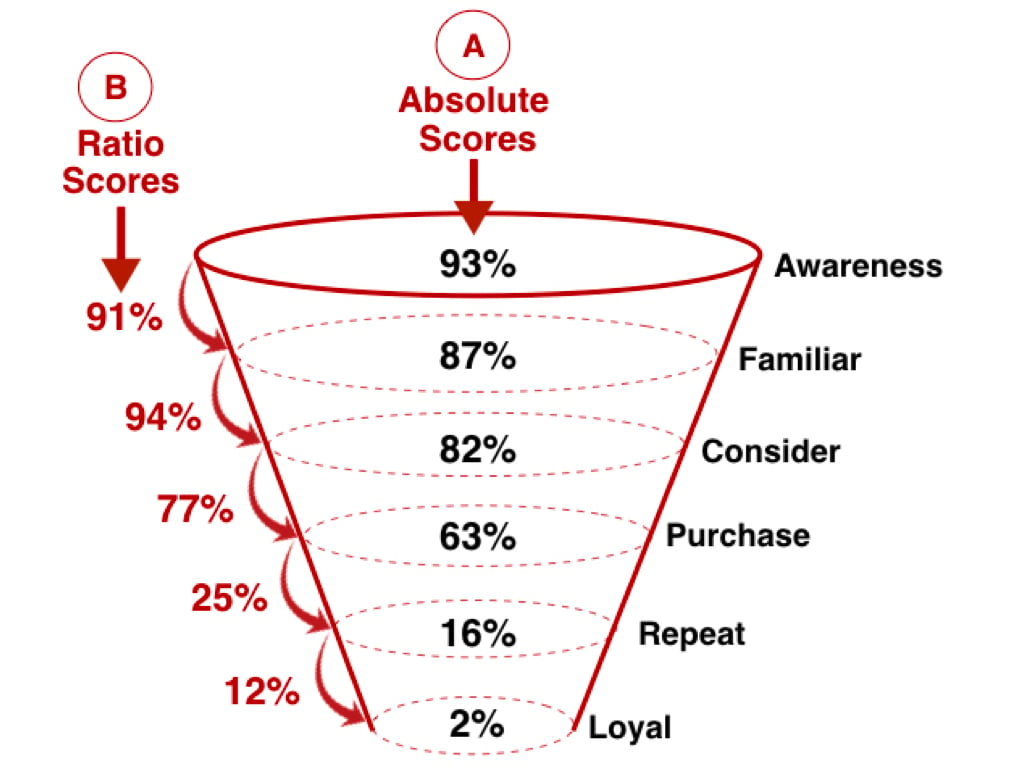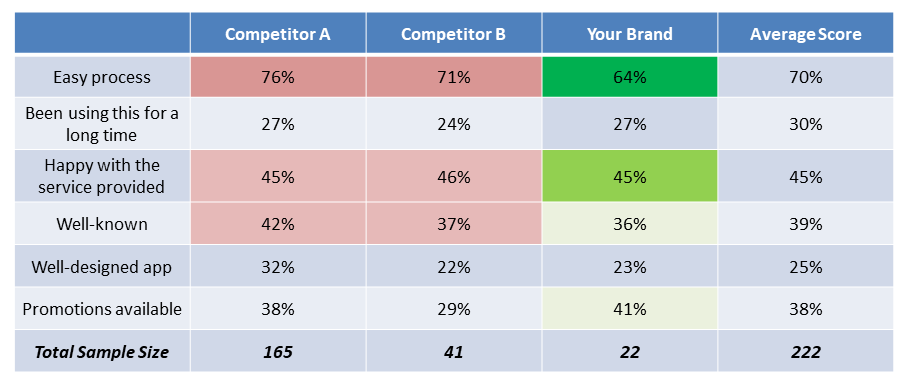Great Brand Represents Great Value
Market research, as valuable and as useful as it is, can seem a little intimidating to a brand or business that has never done market research before. It can seem like a complex, many-headed concept, and knowing how or where to start can be a difficult thing to decide on in the midst of this uncertainty.
When a brand or business is unsure of where to begin with market research, doing a brand health study is a great way to kick off their market research and cover the ‘basics’ of what they need to know about themselves and their consumers’ preferences.
While checking for a brand’s health, certain vital aspects are captured, such as how aware people are of the brand, how they perceive the brand, what they expect from it as compared to other competitors and whether or not they intend on purchasing from them.
Tracking a brand’s equity is an important task for any brand manager or whomever responsible in the marketing aspect. Not only does it help in staying a step ahead of the competition, but it also quantifies the effectiveness of a brand’s marketing and advertising campaigns.
Objectives of Brand Health Survey
Generally, this technique is used to measure a 360 degree view of a brand. It includes the following aspects:
- Awareness and Usage
- Performance of the Brand on its Value Proposition
- Customer Loyalty
- Strategy to Allocate Resources for Maximizing the Brand Potential
- Ability to Charge Premium Services
The ability to charge consumers for premium services is defined by the qualification to charge the offerings from the company’s product, either tangible or intangible, higher than the standard market price.
Areas To Be Covered in a Brand Health Survey
The following features are covered for a comprehensive brand tracking study:

-
Brand Awareness
Consumer awareness is the connection between a brand’s marketing and their sales. This awareness refers to how familiar customers are with the brand. In a brand health survey, both the recalling and recognition of customers are captured. Recalling, however, is a better indicator of the brand’s health as a name that first comes to the customers’ minds proves to be more desirable to the customer as compared to a name that is prompted and then recognized. This is the difference between the brands that consumers instantly think of when an industry is mentioned, and a brand whose name brings about a “Sure, I know that brand too” kind of reaction. Customers are also more likely to recommend the brand that they remember at the top of their minds compared to other brands. -
Brand Usage
Understanding a brand’s usage helps a company realise where it stands in the market. Apart from getting an idea about the consumers’ purchase behaviour and preferences, the study also indicates the brand’s market share. While measuring for brand usage, frequency of usage, the recency of purchases and total spending on the brand are then quantified.

-
Brand Attributes
This section reflects what consumers think of a brand. Consumers purchase from a brand they trust and believe provides good value. This part of the study simply checks whether or not the brand is aligned with the customers’ expectations and how well their needs are fulfilled. Every brand strives to maintain a positive impression about themselves in the minds of customers. Measuring brand attributes checks for time and what the pitfalls are that customers associate with the brand. -
Purchase Intent
Measuring the likelihood of purchase intent is an important part of a brand health survey. Respondents should be probed on their reason for purchase, channel and time so that a near accurate prediction of the actual purchase decision can be made. -
Comparison to Competitor Brands
Metrics like brand awareness and usage are useful, but unless a brand also has these metrics for their competitors, they do not have the context required to know whether or not their brand is doing well. If for example, a brand knows that their brand awareness is at 58%, objectively this sounds like a solid number. However, if they also knew that their competitors’ brand awareness are at 64% and 72%, this indicates that while their awareness is high, their competitors are doing better than them, and they should step up their marketing efforts to improve.
When to Conduct a Brand health Survey
Depending on the industry and the organisation, this study can be conducted at an interval of 3 to 6 months or on an annual basis. Generally it is conducted most frequently required in the FMCG sector, due to the fast paced atmosphere of that industry. For the services industry, conducting a brand health study less frequently is sufficient.
It is beneficial to conduct a brand health survey in the following changing circumstances:
- Business / Organisational change
Whether it’s the name recognition of new members of the organisation, or if the organisational restructuring have changed the processes within the organization, it is worthwhile to track any changes in the brand’s metrics due to these. - Strategic Alignment (Vision, Mission & Values)
If the vision, mission or values of a brand has changed, it may resonate more or resonate less with their target audience, thus changing brand metrics. - Promotional Synchronization with Marketing Plan
A new marketing plan may affect the visibility and recognisability of the brand. - Market Dynamics
Whether it’s the introduction of a new competitor in the industry, or a downturn in the economy, these could affect brand metrics, and should be tracked. - Change in Customer Base or Clients
A new target market being implemented or a new influx of customers could impact brand positioning, which in turn could affect brand metrics as well. - Rebranding in Terms of Names and Logos
A rebrand would definitely shake up the industry and also a brand itself, which would arguably make a brand want to track brand sentiment even more closely than before.
Find out more about Vase.ai’s solutions by clicking here. If you’re interested in a brand health study specifically, consider checking our brand insights page.





